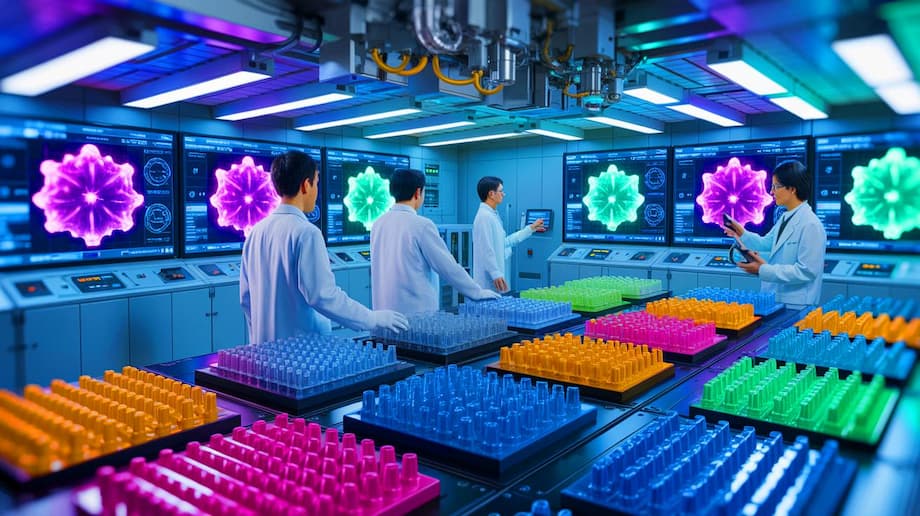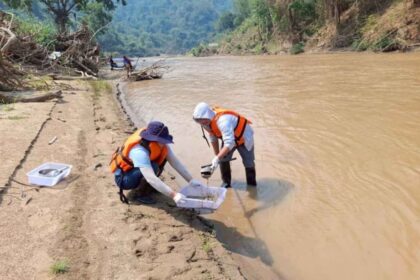Japan’s Electron Beam Innovation: A Turning Point for Teflon Recycling
In a world grappling with mounting plastic waste and the environmental hazards of so-called “forever chemicals,” a team of Japanese researchers has achieved a breakthrough that could reshape the future of recycling. By harnessing the power of electron beams, scientists at Japan’s National Institutes for Quantum Science and Technology (QST) have developed a method to efficiently decompose polytetrafluoroethylene (PTFE)—better known by its trade name, Teflon—into reusable chemical feedstocks. This innovation promises to cut energy consumption in half compared to traditional methods, offering a commercially viable and environmentally safer solution for one of the most persistent forms of plastic pollution.
- Japan’s Electron Beam Innovation: A Turning Point for Teflon Recycling
- How Electron Beam Technology Works
- Environmental and Industrial Impact
- Global Context: Radiation-Based Recycling on the Rise
- Complementary Innovations: Sound Waves and Beyond
- Broader Implications: Toward a Circular Economy for Plastics
- In Summary
Why Teflon and PFAS Are So Hard to Recycle
PTFE is a synthetic fluoropolymer prized for its non-stick properties, chemical inertness, and resistance to heat and corrosion. These qualities have made it indispensable in cookware, electronics, medical devices, and countless industrial applications. However, the same robust carbon-fluorine bonds that make PTFE so useful also render it nearly indestructible in the environment. PTFE belongs to the broader family of per- and polyfluoroalkyl substances (PFAS), which are notorious for their persistence and potential health risks. These “forever chemicals” do not break down naturally, accumulating in landfills, waterways, and even living organisms.
Traditional recycling of PTFE has been a formidable challenge. Standard methods like pyrolysis require extreme temperatures—often between 600°C and 1000°C (1112°F to 1832°F)—and consume vast amounts of energy, making large-scale recycling economically and environmentally unsustainable. As a result, most Teflon products end up in landfills, contributing to the global plastic crisis.
How Electron Beam Technology Works
The Japanese research team’s innovation lies in combining moderate heat with high-energy electron beam irradiation. By heating PTFE to 370°C (698°F) and exposing it to a 5-megagray (MGy) electron beam in the presence of air, they achieved complete decomposition of the material. This process transforms solid PTFE into oxidized fluorocarbons and perfluoroalkanes—gaseous products that can be captured and reused as raw materials in chemical manufacturing, supporting a circular economy for plastics.
Dr. Akira Idesaki, Senior Principal Researcher at QST, explained the significance of the breakthrough:
“By applying heat during irradiation, we were able to reduce the energy required to decompose PTFE by 50% compared to traditional methods, making it much more feasible to recycle fluoropolymers on a large scale.”
This method stands in stark contrast to conventional pyrolysis, which not only requires higher temperatures but also results in greater CO₂ emissions and higher operational costs. The QST team estimates that their process reduces energy consumption for recycling one ton of PTFE from 4,200 kWh to just 2,169 kWh, cutting CO₂ emissions by nearly 50%.
The Science Behind the Process
Electron beam irradiation works by bombarding the PTFE polymer with high-energy electrons, generating free radicals that break the strong carbon-fluorine and carbon-carbon bonds. When combined with heat, this accelerates the decomposition process, converting the solid polymer into gaseous products. Analytical techniques such as infrared spectroscopy and X-ray diffraction confirmed that the process not only decomposes the material efficiently but also alters its internal crystalline structure, further enhancing decomposition at higher temperatures.
Scientific studies have shown that the decomposition rate of PTFE under electron beam irradiation increases dramatically with temperature. At room temperature, only about 10% of the material decomposes, but at 270°C (518°F), the rate jumps to 86%, and at 370°C (698°F), complete decomposition is achieved. The presence of oxygen during irradiation also promotes the formation of oxidized fluorocarbons, which are more easily collected and reused.
Environmental and Industrial Impact
The implications of this breakthrough are profound. PTFE and other PFAS compounds have long been a thorn in the side of environmentalists and regulators due to their persistence and toxicity. By providing a practical and scalable method for recycling PTFE, the electron beam technique could significantly reduce the volume of these materials entering landfills and the environment.
Dr. Yasunari Maekawa, a co-author of the QST study, emphasized the broader significance:
“Our research will significantly contribute to safer and more cost-effective recycling methods for high-performance plastics, heralding a potential shift in how these materials are managed in industrial contexts.”
Industries that generate large amounts of PTFE waste—such as electronics, automotive, and chemical manufacturing—stand to benefit from this technology. By converting waste into valuable chemical feedstocks, companies can reduce their environmental footprint and potentially lower raw material costs.
Reducing CO₂ Emissions and Resource Dependence
Japan, like many countries, relies heavily on imported raw materials for the production of fluoroplastics. The new recycling method not only addresses waste management but also enhances resource security by enabling the recovery and reuse of fluorine compounds. According to QST’s official press release, the process could reduce the life-cycle CO₂ footprint of fluoroplastics by nearly half, a significant step toward meeting global climate goals.
Global Context: Radiation-Based Recycling on the Rise
Japan’s electron beam innovation is part of a broader trend toward using radiation technologies to tackle plastic pollution. The International Atomic Energy Agency (IAEA) has launched initiatives across Asia and the Pacific to promote the use of nuclear and radiation-based methods for plastic recycling. Countries like Indonesia, Malaysia, and the Philippines are collaborating with the IAEA to develop irradiation techniques that can process hard-to-recycle plastics, create high-performance materials, and even produce construction materials from recycled waste.
In Malaysia, for example, the Malaysian Nuclear Agency is working with private companies to use electron beam energy to convert PTFE waste into plastic micropowder, which can be used as an industrial additive. In Indonesia, radiation-induced crosslinking is being explored to improve the properties of recycled plastics for use in wood-plastic composites. The Philippines is using irradiation to enhance the mechanical properties of recycled plastic construction materials, addressing both housing shortages and plastic waste.
The Science of Radiation-Induced Polymer Processing
Radiation processing of polymers is not new, but recent advances have made it more efficient and versatile. Ionizing radiation—such as electron beams, gamma rays, and X-rays—can induce cross-linking or chain scission in polymers, altering their physical and chemical properties. Electron beam irradiation, in particular, offers advantages such as faster processing, energy savings, and reduced toxicity compared to chemical methods.
The efficiency of radiation-induced decomposition depends on several factors, including temperature, dose rate, and the presence of oxygen. High temperatures accelerate the formation of free radicals and chain scission reactions, while oxygen promotes the formation of oxidized products that are easier to collect and reuse. These insights have guided the development of the Japanese electron beam method, making it a model for future recycling technologies.
Complementary Innovations: Sound Waves and Beyond
While electron beam technology is leading the charge in PTFE recycling, other innovative approaches are emerging worldwide. Researchers at the University of Leicester in the UK have developed a technique using sound waves to separate PFAS membranes from precious metals, enabling the recycling of valuable components without the use of harsh chemicals. This method could revolutionize the recycling of fuel cells and other advanced materials that incorporate PFAS compounds.
Such complementary technologies highlight the growing global effort to address the challenges posed by persistent plastics and forever chemicals. By integrating multiple approaches—radiation, sound waves, and advanced chemical processes—researchers hope to build a more sustainable and circular economy for plastics.
Challenges and the Path to Industrial Adoption
Despite its promise, the electron beam method faces several hurdles before it can be widely adopted. Scaling up the process from laboratory to industrial scale will require significant investment in infrastructure, including electron beam accelerators and systems for capturing and processing the gaseous products. Collaboration between research institutions, industry partners, and government agencies will be essential to overcome technical and economic barriers.
There are also regulatory and safety considerations. Handling high-energy electron beams and managing the byproducts of PTFE decomposition require strict safety protocols and environmental controls. However, the potential benefits—in terms of reduced energy consumption, lower emissions, and resource recovery—make these challenges worth addressing.
Broader Implications: Toward a Circular Economy for Plastics
The successful development of energy-efficient PTFE recycling is more than a technical achievement; it represents a paradigm shift in how society manages plastic waste. By transforming a stubborn pollutant into a valuable resource, the electron beam method supports the principles of a circular economy, where materials are continuously reused and recycled rather than discarded.
This approach could be extended to other hard-to-recycle plastics, further reducing the environmental impact of plastic production and disposal. As governments and industries worldwide seek solutions to the plastic crisis, innovations like Japan’s electron beam technology offer a blueprint for sustainable progress.
In Summary
- Japanese researchers have developed an electron beam method that decomposes PTFE (Teflon) into reusable chemical feedstocks with 100% efficiency at lower temperatures.
- This process cuts energy consumption and CO₂ emissions by about 50% compared to traditional recycling methods like pyrolysis.
- The technology addresses the challenge of recycling persistent “forever chemicals” and supports a circular economy for plastics.
- Radiation-based recycling methods are gaining traction globally, with similar projects underway in Indonesia, Malaysia, and the Philippines.
- Complementary innovations, such as sound wave separation, are also advancing the recycling of PFAS-containing materials.
- Scaling up the electron beam method for industrial use will require investment and collaboration, but the potential environmental and economic benefits are substantial.
- This breakthrough marks a significant step toward sustainable plastic waste management and resource recovery worldwide.












